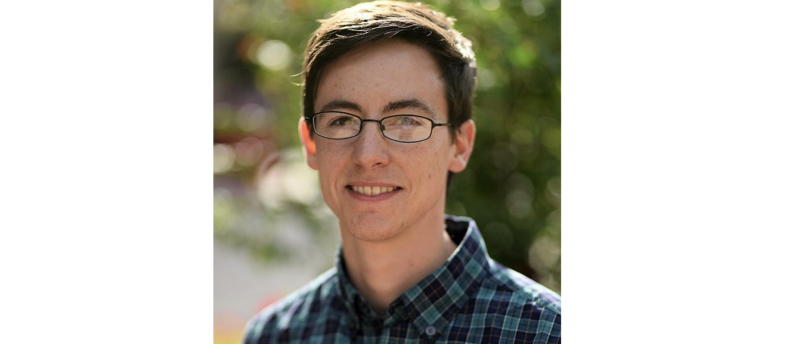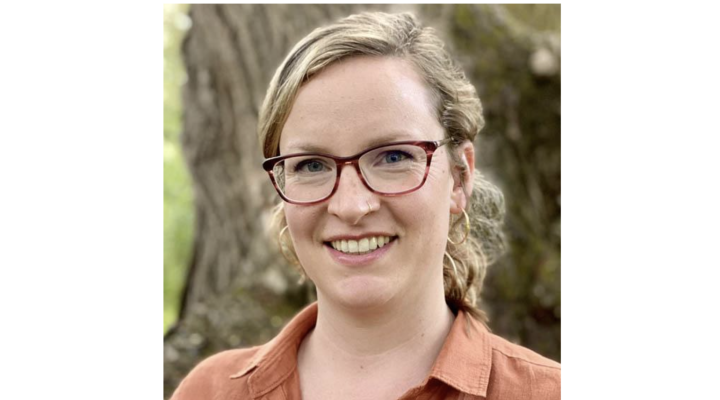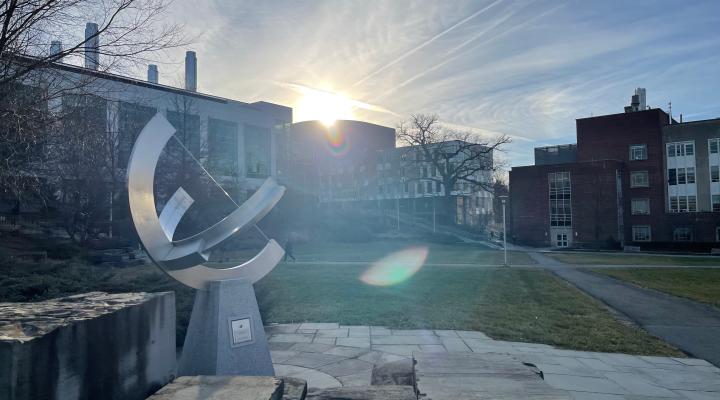Back in 2008 when EAS Assistant Professor Riley Culberg was an undergraduate at the United States Military Academy at West Point, it is unlikely he would have predicted he would end up on the faculty of an Ivy League engineering college.
“I was a dual major in computer science and geospatial information science,” Culberg said. “So, I had an introduction to remote sensing at that point, but more from a data analysis algorithmic perspective. There wasn't really a science component to that. I was just working with the data.” After graduation, Culberg served almost five years in the Army, first as a project engineer and then as a geospatial operations officer.
When Culberg left the Army, he knew he wanted to learn more about radar sensing but wasn’t exactly sure what that might look like. Then, while in an electrical engineering master’s program at Stanford, he took a class on ice-penetrating radar and suddenly his path became much clearer. “I signed up for the class because it was the only one with “radar” in the title,” Culberg said. “I fell in love with the class and the way they were using radar to test hypotheses to better understand the Earth.” The professor who taught that class, Dustin Schroeder, became Culberg’s Ph.D. advisor.
“Radar is really the only tool we have to image the inside of an entire ice sheet and see what is happening there,” Culberg said. “I started working with Dusty and knew right away this was the perfect intersection for me between my wish to do technical radar work and my desire to tackle some large fundamental science questions.”
At first Culberg worked on systems design for satellite-based ice-penetrating radar, but quickly found another challenge that interested him even more. “The near-surface structure of an ice sheet sends back all of these weird signals because it is just so heterogeneous,” Culberg said. “The more I looked at what was going on, the more I became fascinated by the groundwater-style system of water in, on, and under ice sheets.”
The study of glaciers and ice sheets is a relatively young field and the specialty of cryohydrogeophysics is even younger. “There has been this basic assumption in the field that as ice melts, the water makes it way to the ocean right away,” Culberg said. As researchers spent time looking more closely at the behavior of water in these large ice sheets, it became clear that the system is far more complicated than that. As Culberg studied the hydrology of glaciers and ice sheets during his doctoral program the more he learned the more fascinated he became.
After graduating from Stanford with a Ph.D. in electrical engineering, Culberg spent a year as a Hess Postdoctoral Fellow in the Department of Geosciences at Princeton before coming to Cornell. In Ithaca, Culberg has established the Cornell Hydrology, Ice, and Radar Physics (CHIRP) Lab to continue his study of the subsurface hydrology and internal structure of ice sheets using ice-penetrating radar and other geophysical and remote sensing methods.
“Much of our research focuses on understanding how the dynamics of water systems inside ice sheets and glaciers impact their mass balance and stability in a warming world,” Culberg said. “We are particularly interested in feedbacks between climate and near-surface hydrology and the role of englacial water systems in modulating water and heat exchange between the ice sheet surface and bed.”
Using remotely sensed data, field observations, and numerical models, Culberg is expanding what we know about the hydrology of glaciers and ice sheets—an especially relevant field as we seek to better understand and predict the effects of global climate change. He has chosen to do this work at Cornell for several reasons.
“EAS has three people doing quantitative radar geophysics, which is unheard of anywhere else,” Culberg said. “So that is a huge attraction for me knowing that I have colleagues and my students will have that support built right into the department.” In addition, Culberg said the department has two other faculty members doing work in the cryosphere; the environment in the department feels very supportive; and coming back to the Northeast feels like coming home, (since Culberg grew up in the Pittsburgh area.)
When Culberg isn’t thinking about where the water goes in glacial systems, he enjoys reading science fiction and fantasy works, hiking, trail running, and orienteering.





